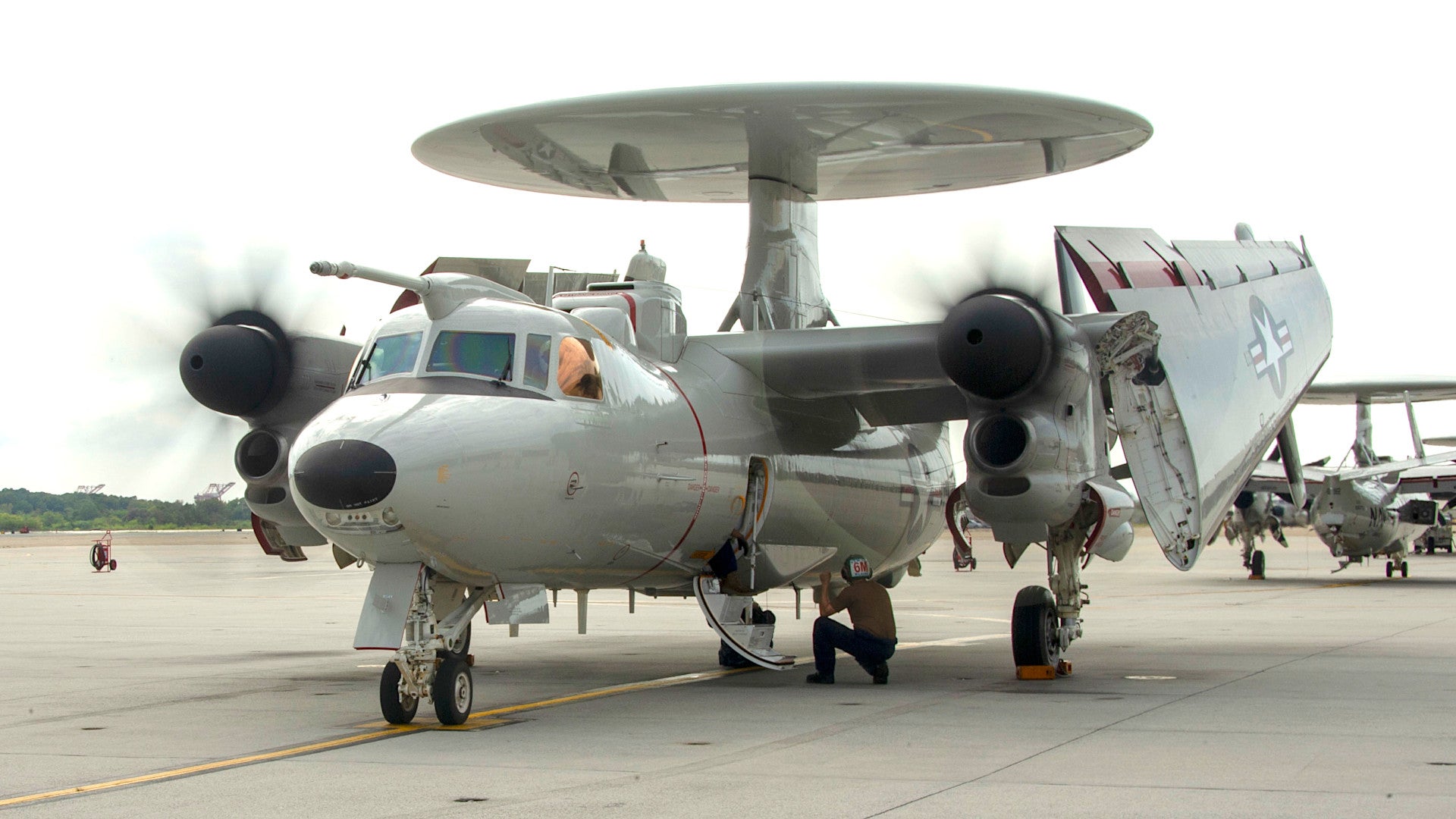The first non-developmental E-2D Advanced Hawkeye with an aerial refueling capability has officially joined the U.S. Navy’s fleet, marking the first step toward fielding these aircraft across the service’s carrier-based airborne early warning squadrons. Giving these already game-changing aircraft the ability to refuel in mid-air will significantly increase their endurance, something The War Zone has already explored in-depth in the past.
Carrier Airborne Early Warning Squadron 120 (VAW-120), the “Greyhawks,” based at Naval Station Norfolk in Virignia, took delivery of the new E-2D on Sept. 9, 2019. The Navy had already received three E-2Ds with the aerial refueling conversion for developmental purposes and is expecting that the new aircraft will reach initial operational capability next year. The service’s plans to acquire Advanced Hawkeyes with this capability trace back at least to 2014.
“This is an important day for naval aviation as we continue to increase our capabilities and maintain our competitive edge in the skies,” U.S. Navy Rear Admiral Roy Kelley, the commander of Naval Air Force Atlantic, said in a statement. “This capability will extend the endurance of Hawkeyes, increasing the Navy’s battlespace awareness and integrated fire control – both from the air and the sea.”
VAW-120 is what is known as the Fleet Replacement Squadron (FRS) for the E-2D, and as such, is responsible for training aircrews and maintainers for operational Hawkeye units. The squadron is also responsible for training related to the C-2A Greyhound carrier onboard delivery aircraft, which is a derivative of the E-2, for the time being. The Navy is in the process of replacing the C-2A with the CMV-22B Osprey, a decision the War Zone has previously covered in detail.

“Aerial refueling capability is a game-changer for the E-2D community and future operations in the high-end fight,” U.S. Navy Commander Scott Wastak, VAW-120’s commanding officer, also said in a statement. “We will now begin to train instructor pilots and refuel with several different Navy and Air Force tanker aircraft, including F/A-18s.”
The Navy expects to buy at least 29 E-2Ds with the aerial refueling probe, which adds approximately $2 million to the aircraft’s unit cost, which had previously been around $169 million, according to official budget documents. The service plans to have two operational airborne early warning squadrons flying the new subvariant of the aircraft by the end of 2020.
As of 2018, the Navy and Northrop Grumman were still in negotiations about modifying the 45 E-2Ds that the Navy already has to bring them in line with new aerial refueling-capable configuration. The upgrades have an estimated cost of around $6 million per aircraft.

The E-2D is already an immensely capable and critical component of the Navy’s Carrier Air Wings. The aircraft provide vital airborne early warning and battle management functions, “quarterbacking” carrier aviation operations from the air and keeping watch for potential threats, which you can read about in more detail in this past War Zone feature.
The Advanced Hawkeyes have also become a central node in the Navy’s cooperative engagement capability (CEC) efforts, which include service’s overarching Naval Integrated Fire Control-Counter-Air (NIFC-CA) networking concept, which The War Zone has covered extensively. In this role, E-2Ds can already significantly extend the reach of both the carrier air wing’s aircraft and weapons on ships in the carrier strike group. The data fusion and relay functions the aircraft provides also allows those other assets to engage targets beyond the range of their own sensors, something you can read about in more detail here.

Aerial refueling capability will allow the E-2Ds to fly further from the carrier itself with less risk, giving the strike group’s operations ever great reach, and will simply allow them to remain on station longer. A typical Advanced Hawkeye mission now lasts around four hours, two and a half of which are on station. With aerial refueling, the Navy plans to extend total mission time to seven hours, five of which will be on station.
Now that VAW-120 is receiving the first E-2Ds with the aerial refueling probe, the squadron’s instructor pilots will also likely begin exploring the new concepts of operations that the aircraft enables and providing their own additional feedback. That Navy is also separately looking to shake up how it conducts aerial refueling operations within the carrier air wing, in general, through the future introduction of the MQ-25A Stingray tanker drone.

The new E-2Ds may also create new issues that will need to be resolved, especially when it comes to the human factor. Craig “Slim” Picken, a veteran E-2C Naval Flight Officer, told The War Zone
in a lengthy interview that he felt he was lucky never to have had to fly in an E-2 with an aerial refueling capability, explaining:
“The Hawkeye is a very uncomfortable airplane.
“The three Naval Flight Officers (NFO) in the back sit sideways for four-plus hours in a dark tube, on a de-armed ejection seat, with the nose of the airplane slanted 12 degrees nose-up. The vibration of the then four monstrous (now eight) propeller blades was loud and exhausting.
“The air conditioning never worked well, either. Thus, the guy furthest aft always froze his ass off while the NFO closest to the radar boxes burned up.
“There were five radios with constant chatter, 20 or more airplanes to control, and radar systems that required constant attention, and so on.
“It was busy.
I was always thankful that the airplane didn’t have in-flight refueling capability. The torture was limited to five hours. A single flight was tiring. Two in the same day was exhausting!”
All told, it’s safe to say that the Navy’s airborne early warning squadrons are set to gain impressive new capabilities as aerial refueling-capable E-2Ds begin arriving in increasing numbers over the next year. At the same time, the service may now need to also explore ways to ensure that crews can handle the added stresses of much longer-duration missions.

Contact the author: joe@thedrive.com
